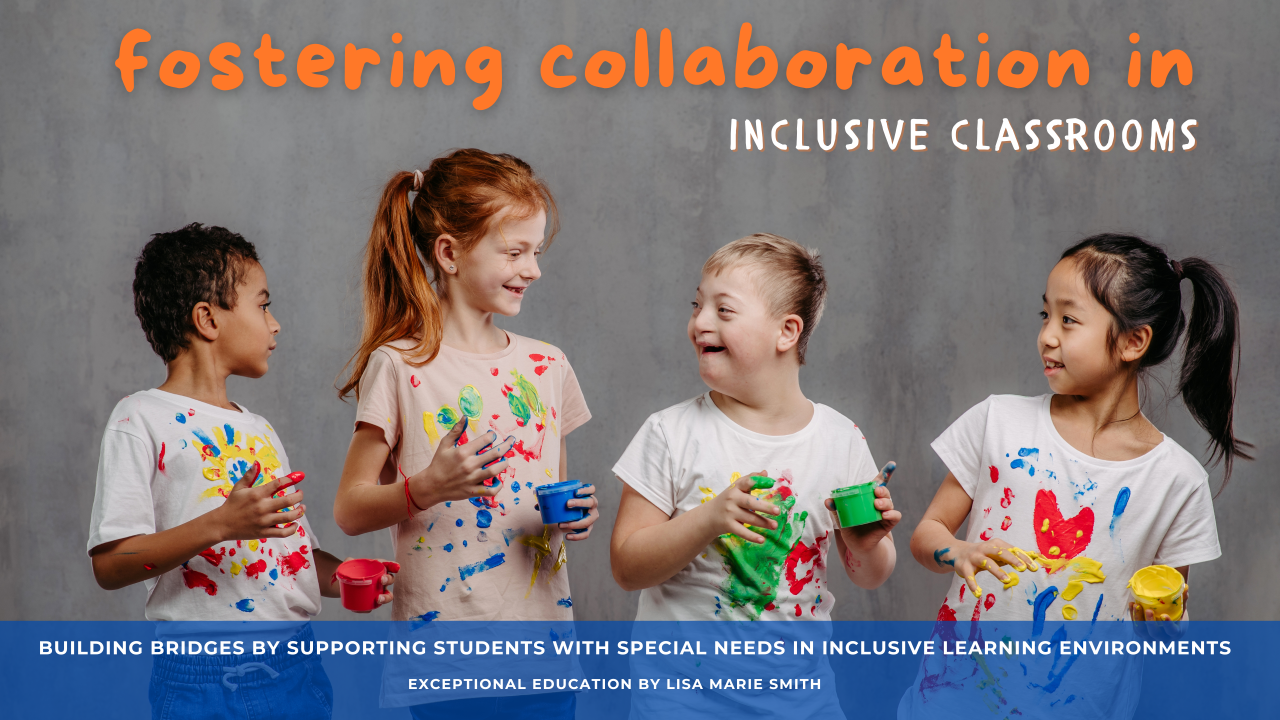
Fostering Collaboration in Inclusive Classrooms
Lisa Marie Smith M.Ed., MA, MA, Ed.D. Candidate
Transformative Leader in Academic Support Services | Special Education Advocate | Professor | Emerging Children's Book Author | Special Education and Innovation Presenter
Building Bridges by Supporting Students with Special Needs in Inclusive Learning Environments
Introduction
In today's diverse classrooms, fostering an inclusive environment where every student can thrive is more important than ever. As a special education teacher with over 17 years of experience working with students requiring moderate to extensive support, I've witnessed the transformative power of inclusion firsthand. Promoting student collaboration can create a learning atmosphere where everyone feels valued and supported. This article explores strategies for helping students with special needs through collaboration in inclusive learning environments, with practical examples for each grade band.
Background Information
Inclusion is not just a buzzword; it's a philosophy that promotes the integration of all students, regardless of their abilities, into general education classrooms. This approach benefits everyone, encouraging empathy, understanding, and mutual respect. Students with special needs often require additional support, which can be effectively provided through collaboration with peers and support staff, such as paraprofessionals and speech-language pathologists (SLPs).
Strategies for Supporting Students with Special Needs
Grades K-2: Building Foundations of Friendship
At this young age, fostering an inclusive environment can set the tone for a student's educational journey.
Buddy Systems:?Implementing a buddy system where students are paired with a peer can be incredibly beneficial. For instance, a student with autism might struggle with transitions between activities. A buddy can help guide them, providing a model for appropriate behavior and offering comfort.
Example:?In the classroom, pairing a student with Down syndrome with a caring classmate who excels in social interactions. This buddy can help them navigate the playground, ensuring the student feels included during recess. Over time, the student with Down syndrome will likely become more confident and engaged while her buddy develops empathy and leadership skills.
Grades 3-5: Encouraging Cooperative Learning
As students grow, their ability to work collaboratively on projects becomes crucial.
Group Projects:?Incorporate group projects where each student has a role tailored to their strengths. This supports students with special needs and teaches all students the value of teamwork.
Example:?During a science project, assign a student with ADHD the role of the experiment conductor, where they could move around and engage actively. Their peers can be responsible for recording data and presenting findings. This setup allows the student with a disability to channel their energy productively while contributing meaningfully to the group's success.
Grades 6-8: Promoting Social Skills and Self-Advocacy
Middle school is a critical time for developing social skills and self-advocacy.
Social Skills Groups:?Create small social skills groups facilitated by support staff like SLPs. These groups can practice scenarios, role-play, and discuss strategies for managing social situations.
Example:?A student with social anxiety who found group work overwhelming. They can practice initiating conversations and handling conflicts safely by participating in a social skills group. This practice can boost their confidence and make them more comfortable participating in larger group activities.
Grades 9-12: Preparing for Independence
High school students are on the brink of adulthood, making it essential to prepare them for independence.
Peer Mentoring Programs:?Develop peer mentoring programs where older students mentor their younger peers with special needs. This fosters a sense of responsibility and offers real-life role models for the younger students.
Example:?A student with cerebral palsy in a high school class can be paired with a senior interested in pursuing a career in physical therapy. This mentor can help navigate the school environment, assist with adaptive technology, and provide academic support. The mentorship can increase the student's academic performance and inspire the mentor to deepen their commitment to a future career in special education.
Suggestions for Accommodations
Accommodations are crucial for supporting students with special needs and can vary widely based on individual requirements. Here is a more exhaustive list of accommodations and modifications that can help create an inclusive learning environment:
Flexible Seating
Visual Supports
Assistive Technology
领英推荐
Curriculum Modifications
Sensory Accommodations
Organizational Supports
Behavioral Supports
Communication Supports
Testing Accommodations
Physical Supports
Role of Support Staff in Fostering Collaboration
In inclusive learning environments, the collaboration between special education teachers, general education teachers, and support staff is essential to ensure that all students receive the support they need to succeed.?
Here are some examples of how each role can contribute to fostering collaboration and inclusion:
Special Education Teachers
General Education Teachers
Paraprofessionals
Speech-Language Pathologists (SLPs)
Occupational Therapists (OTs)
School Psychologists
Conclusion
Creating an inclusive classroom environment where students with special needs can thrive requires dedication, creativity, and collaboration. By employing strategies tailored to different grade levels, offering appropriate accommodations, and leveraging the expertise of support staff, we can ensure that every student has the opportunity to succeed. As we advocate for integration and inclusion, we build a brighter future for all students, fostering a community of empathy, respect, and lifelong learners.